|
The 2022 AP US History Free-Response Questions have been released to the public! Click here to view the questions on the College Board's website. 2022 APUSH SAQ Sample ResponsesClick here to view my sample responses to the 2022 APUSH SAQ items. 2022 APUSH DBQ Sample Response(s)Click here to view my sample response(s) to the 2022 APUSH DBQ. This file will be updated to include several sample responses that would earn different point values. 2022 APUSH LEQ Sample ResponsesThis year's LEQ 2 asked students to assess the relative importance of causes for the settlement of the British colonies. Click here to see a set of sample responses I've put together for LEQ 2. Take a look at my analysis of the 2022 APUSH Free-Response Questions on Marco Learning's YouTube channel:
0 Comments
The controversial Kansas-Nebraska Act, by repealing the Missouri Compromise and applying popular sovereignty in territories that had been previously closed to slavery, created a mad rush to settle the Kansas Territory. Antislavery settlers arrived from as far away as New England, while proslavery settlers augmented their numbers with Missouri residents who crossed the border in order to vote in territorial elections. This timeline follows the saga of "Bleeding Kansas" from its origins to its conclusion. Click here to download my Bleeding Kansas timeline in PDF format.1820 (Missouri Compromise)The Missouri Compromise closed all territory north of the 36°30′ parallel to slavery within the Louisiana Purchase. The territories that would later be organized as Kansas and Nebraska were north of the 36°30′ parallel, so the understanding reached in 1820 was that this territory would be closed to slavery. 1850 (Compromise of 1850)As part of the Compromise of 1850, the New Mexico and Utah Territories were both organized in the Mexican Cession on the principle of popular sovereignty, with Congress leaving the settlement of the slavery question to the settlers, themselves. California is admitted into the Union as a free state. This was the first de facto application of popular sovereignty because the settlers in California drafted and submitted a free-state constitution on their own, without having previously been organized as a federal territory. 1854 (The Kansas-Nebraska Act)
1854-1859 ("Bleeding Kansas")
1855 (The Topeka Constitution)A convention of settlers was held in Topeka, Kansas, which produced the Topeka Constitution, which was a Free State constitution for Kansas. The Topeka Constitution was held up in Congress, not being able to pass through the proslavery Senate. 1856 (The Brooks-Sumner Incident)Charles Sumner, an abolitionist senator from Massachusetts, delivered an inflammatory speech, which he titled, “The Crime Against Kansas,” in which he personally insulted Senator Andrew Butler of South Carolina and went on to disparage his entire state. Preston Brooks, a member of the House of Representatives from South Carolina and a relative of Senator Butler, took it upon himself to beat the living daylights out of Sumner with a cane to avenge the honor of his state. The caning of Charles Sumner became a polarizing incident, as Northerners vilified Brooks as a caricature of a violent Southern slaveholder, while he was hailed as a hero in the South. Southern supporters sent canes to Brooks in appreciation for his efforts.
1857 (The Lecompton Constitution)Proslavery settlers drafted the Lecompton Constitution, which would have established Kansas as a slave state. In spite of support from President Buchanan, the Lecompton Constitution was blocked by the free-state majority in the House of Representatives. 1861 (Statehood)After the secession of the Deep South created a free-state majority in the United States Senate, Kansas was finally admitted into the Union as a free state on January 29, 1861.
ContextAlexander Hamilton had ambitious plans for building a strong central government with an equally strong credit rating. In order to build public credit, Hamilton pushed a plan for the federal government to assume the war debts that the states had incurred during the Revolution. After resisting the measure initially, Jefferson and Madison agreed to the measure in return for an agreement that the federal capital would be moved to a site on the Potomac River on the border of Virginia and Maryland. Hamilton's Whiskey Tax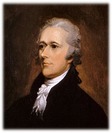 After the federal government took on over $20 million in new debt, Hamilton’s next step was figuring out how to pay for it. As is often the case in history, the people who were chosen to pay for this new debt assumption were not the people who benefitted most from it or even supported it in the first place. To fund this new debt, Hamilton recommended a federal excise tax on whiskey. An excise tax is a tax on the sale of a product or on a product produced for sale (in this case, the latter). Hamilton’s whiskey tax is also an example of a sin tax, which is placed on goods that are deemed luxurious – or even harmful (today, taxes on cigarettes are an example).
It’s important to note here that Jefferson wanted to explore ways for wine to become cheaper rather than to raise the price of whiskey through taxation. A Regressive TaxHamilton’s whiskey tax hit especially hard in Appalachia, the region of westernmost settlement at the time, where farmers would distill small batches of whiskey for easier transport across the Appalachian Mountains or down the Ohio River to New Orleans. At the time, it was difficult to transport surplus wheat across such long distances, but a farmer could get a good return on a few barrels of whiskey, making for a profitable side hustle for these farmers. Whiskey also served as currency in these Western regions where precious metals and paper money were scarce. Because of these economic realities, Western settlers felt targeted by Hamilton’s tax, which hit them harder than it did Americans living on the Eastern Seaboard. To add insult to injury, Hamilton’s tax was a regressive tax that allowed large distillers to pay a flat rate, while small distillers had to pay by the barrel. At this time, President George Washington was the largest commercial distiller in America. Distillers like Washington could pay a single flat fee and produce as much as they wanted with no additional tax, but Western farmers who lacked the resources to operate on that kind of scale had to pay a tax on every single barrel they produced.
The Whiskey RebellionPopular discontent spread throughout Appalachia and rose to the point of a full-scale rebellion in Western Pennsylvania – specifically, the area around Pittsburgh. The Whiskey Rebellion, as it is known to history, was the third in a line of major frontier settler rebellions. Bacon’s Rebellion in Colonial Virginia and Shays’ Rebellion in Massachusetts during the Confederation Period followed similar patterns of armed uprising by frontier farmers against Eastern elites. While the American Revolution had some features of these rebellions, it was a cooperative effort between frontier settlers and the colonial elites who supported it. The Whiskey Rebellion was the last of these armed uprisings in the early history of the United States. The organizers of the Whiskey Rebellion used a lot of the same rallying cries and methods that had been used a few decades before during the years leading up to the American Revolution. “No Taxation Without Representation,” shouted the disgruntled crowds. Although Western Pennsylvania was represented in Congress, those who protested against the excise tax saw it as similar to the Stamp Act, where an outside government had taxed the colonies without the consent of their colonial legislatures. No one disputed the authority of the new federal government to collect taxes on imports, but the idea of this new government reaching directly into the pockets of citizens struck many people as a repressive throwback to the days of unfair taxation by Parliament. Just as the Sons of Liberty had used tarring and feathering to intimidate tax collectors, the Whiskey rebels tarred and feathered a federal tax collector, forcing him to “ride the rail” through the town in an old humiliation ritual. Escalation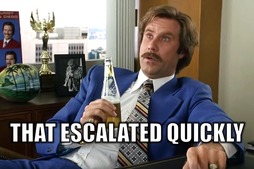 According to Ron Burgundy, a widely respected historian and Scotch connoisseur, the Whiskey Rebellion escalated quickly. According to Ron Burgundy, a widely respected historian and Scotch connoisseur, the Whiskey Rebellion escalated quickly. Between 1792 and 1794, things escalated as the unrest in Western Pennsylvania went from a raucous protest to a full-scale rebellion. Threats were made, effigies were burned, tax collectors were assaulted, and finally, shots were fired by organized groups of armed militiamen. In 1794, Washington decided that the rebellion was too large to be contained by local authorities and worthy of federal attention and gained authorization from Congress to call up a federalized militia. The federal government raised an army of 13,000 men to put down a rebel militia whose size was estimated to be around 500. Once the federal militia was assembled, Washington showed up to personally inspect the troops. Although one historian refers to this as “the first and only time a sitting American president led troops in the field,” this isn’t strictly accurate, as following his inspection, Washington left the army under the command of “Light-Horse Harry” Lee, a Revolutionary War officer who was then serving as governor of Virginia. It was Lee who would lead the army into Western Pennsylvania to put down the rebellion. Ironically, Lee was the father of General Robert E. Lee, the most famous person ever to lead a “rebel army” in the history of the United States. The force assembled by the federal government was so overwhelming that it prompted the small rebel militia to disperse before the federal militia even got there. This was viewed as a massive victory for Hamilton and the Federalists, who had sought to demonstrate the power of the new federal government to put down insurrections – an area where the Confederation government had proven to be woefully inadequate while Shays’ Rebellion had raged on for months in Western Massachusetts. In a gesture of clemency, President Washington pardoned two men who were found guilty of treason and sentenced to hang. Jefferson and the Whiskey Rebellion Although Federalists hailed this as an achievement of a strong central government against anarchist elements intent on undermining its authority, Jefferson viewed the federal government’s response as an overreaction to a minor uprising. “An insurrection was announced and proclaimed and armed against, but could never be found,” Jefferson wrote to James Monroe. Jefferson and Madison believed that Hamilton used the rebellion to advance his own partisan political agenda, casting the Federalist Party as the party of law and order and the Republican Party as the party of rebellion and lawlessness. No matter what Hamilton’s motives were, the unceremonious end of the Whiskey Rebellion put an end to a tradition of armed uprisings of disgruntled whites on the western frontier that had spanned over a century. Resistance against federal policies by disaffected whites would be confined to the political sphere until the 1850s, when violence erupted in Kansas in the years leading up to the Civil War. Sin Tax Error?The long-term victory would rest with the Jeffersonians, as no Federalist would ever hold the presidency again after John Adams lost his bid for re-election in 1800. In the years since, Americans have continued to have debates about how government policies affect the less fortunate, both in terms of the use of government police powers and of fair and equitable taxation – a debate that has shown itself most recently in the presidential candidacies of Bernie Sanders and Donald Trump. Appalachian voters, angry with elites in Washington, were a key part of the coalition that elected Donald J. Trump as the 45th President of the United States. Politically, Hamilton’s victory proved to be short-lived, as small farmers in Appalachia put aside their bullets and went to the ballot box in protest. Western areas supported Jefferson’s Republican Party overwhelmingly in the elections that followed, leading to a Republican takeover of the White House and both houses of Congress in 1800. As president, Jefferson signed a repeal of Hamilton’s whiskey tax, along with all internal excise taxes, preferring to fund the government through revenue tariffs. “It may be the pleasure and pride of an American to ask,” Jefferson stated in his Second Inaugural Address, “what farmer, what mechanic, what laborer, ever sees a tax-gatherer of the United States?” Further Reading:
Dumas Malone, Jefferson and the Ordeal of Liberty (University of Virginia Press, 1962) The first two party system in the United States began around 1791 during George Washington's presidency and lasted until the 1816 presidential election following the War of 1812. Jefferson vs. HamiltonGeorge Washington's cabinet (which included only four men) was dominated by Alexander Hamilton, the Secretary of the Treasury, and Thomas Jefferson, the Secretary of State. The differences between Jefferson and Hamilton regarding the powers of the central government, the proper interpretation of the Constitution, the economy, and foreign policy quickly degenerated into partisanship as other political leaders rallied around Jefferson and Hamilton. Hamilton favored a strong, active, and energetic central government, while Jefferson advocated for a limited federal government that would respect the rights of the states. John Adams sided with the Federalists in spite of some personal and political disagreements with Hamilton, while Jefferson was joined by his close friend, James Madison. Madison's alignment with Jefferson is significant because it represented an end to the political alliance between Madison and Hamilton that produced The Federalist Papers. It's important to note here that the first two party system wasn't a simple continuation of the debate over the ratification of the Constitution between the Federalists and the Antifederalists, although there certainly were some correlations. While nearly everyone who had opposed the ratification of the Constitution would have been gravitated toward Jefferson's party, there were those who, like Madison (the "Father of the Constitution), had advocated strongly for ratification, yet saw Hamilton's plans to strengthen the central government as exceeding the powers delegated by the Constitution. Federalists vs. [Jeffersonian] Republicans
It's important to distinguish Jefferson's Republican Party from the Republican Party that exists in the United States today. The present-day Republican Party was founded in the 1850s after the breakup of the Second Party System. In order to avoid confusion, historians have traditionally referred to Jefferson's party as the Jeffersonian Republican Party, although the "Democratic-Republican" terminology used by political scientists has lately become more common (in spite of its historical inaccuracy). Strong Central Government vs. States' RightsThe difference between the Federalists and the Republicans concerned the role of the central government. Although the Constitution was drafted and ratified in order to create a stronger central government than had existed under the Articles of Confederation, the Constitution still retained many features of federalism, which limited the power of the central government. In The Federalist Papers, Madison specifically reassured states' rights advocates that the Constitution would not destroy the power of state governments. "The powers delegated by the proposed Constitution to the federal government are few and defined. Those which are to remain in the State governments are numerous and indefinite." -- Federalist No. 45 (Madison)
The Fears of the Federalists
While Federalists feared anarchy, Jefferson and Madison were much more fearful of tyranny. During Shays' Rebellion, Jefferson wrote to Madison, "a little rebellion now and then is a good thing." Rationally, Jefferson did not see how one rebellion in a single state threatened the existence of the United States, but he feared that a strong central government could place the states at risk of having their rights stripped away as they had been at the outset of the American Revolution. "I am not a friend to a very energetic government," Jefferson wrote, "It is always oppressive." This view of government was behind all of Jefferson's efforts to keep the power of the central government as limited as possible, fearing oppression (which he had experienced) more than anarchy (which he had not experienced). Strict vs. Loose Construction of the ConstitutionIn order to limit the power of the central government, Jefferson interpreted the Constitution as a strict constructionist. To Jefferson, the government only had the powers that were enumerated (specifically listed or numbered) in the Constitution. Hamilton, a loose constructionist, advocated for the doctrine of implied powers, claiming that by granting some powers to the central government in the Constitution, the Framers had implied a grant of other powers that will assist the government in executing the enumerated powers.
Constituents: The Support Bases of the Federalists and RepublicansEvery political movement in a society with representative government depends highly upon the constituencies being represented by each political faction. Hamilton and the Federalists drew their support largely from Northeastern coastal areas that were highly dependent on commerce. These were the same people who had advocated most strongly for a stronger central government that would have the power to control trade. The Northeast was also cultivating a manufacturing sector, which Hamilton sought to use the power of the central government to promote.
Economic Development vs. Laissez-FaireAlexander Hamilton believed that the future of the United States as a powerful nation depended on the development of a manufacturing sector on par with that of Britain. He believed that government would be an essential support for building a manufacturing sector that would make the United States an economic and military power. Jefferson, who saw no need for domestic manufacturing when the United States could trade for European manufactured goods, resisted Hamilton's plans to develop a manufacturing sector. Jefferson advocated for a laissez-faire (let it be) approach by government toward economic involvement. His ideas were influenced not only by his devotion to agriculture, but also by the influence of Adam Smith's recently published book, Wealth of Nations, which advocated laissez-faire and free trade as the best paths to economic growth. Jefferson's "hands off" approach contrasted with Hamilton's "hands on" approach to government's role in the economy. The National BankBy far, the most famous disagreement between Jefferson and Hamilton was on the issue of the national bank. Hamilton believed that the establishment of a national bank was "necessary and proper" for helping the government to execute its enumerated powers in the financial sector, such as collecting taxes, borrowing money, and coining money. Jefferson saw Hamilton's plan for a national bank as an unconstitutional seizure of power by the federal government. At no point does the Constitution ever explicitly authorize Congress to charter a bank. Jefferson also opposed the bank on economic grounds, as he believed that it would increase the central government's role in the economy and work for the benefit of commercial and manufacturing interests. He advised President George Washington to veto the bill that created the First Bank of the United States, but Washington ultimately went with Hamilton's advice on the matter. To download the primary sources from which I've drawn these quotes, click here. Protective Tariff vs. Free TradeIn order to help with the establishment of a domestic manufacturing industry, Hamilton advocated for a tariff that was higher than what was necessary to fund the government, known as a protective tariff. A protective tariff would artificially increase the price of foreign manufactured goods in order to encourage Americans to buy more expensive products manufactured domestically, which would help with the growth of domestic manufacturing. Jefferson opposed protective tariffs for both constitutional and economic reasons. Southern farmers who depended on foreign trade would find themselves paying more for the manufactured goods that they bought from Europe, so Jefferson's laissez-faire approach benefited them most. In addition, the Constitution empowers the government to levy taxes in order to "pay the Debts and provide for the common Defense and general Welfare of the United States." Since the objective of a protective tariff meets none of these criteria, Jeffersonians believed that such a tariff was unconstitutional and that only revenue tariffs should be imposed by the central government. The constitutionality of protective tariffs would continue to be a divisive issue in the United States for decades, culminating in the Nullification Crisis following the Tariff of 1828. Federal Assumption of State War DebtsOne of Alexander Hamilton's goals was to build public credit. At the time the Constitution was ratified, the United States government had a massive debt that it was making little progress in repaying. Some states, such as Massachusetts, had similar debt problems as a result of the Revolutionary War. In order to effectively build public credit, Hamilton proposed that the federal government assume the war debts of the states. Jefferson opposed Hamilton's plan to assume state debts because it would bind the states more closely together and strengthen the central government. Also, as a Virginian, he came from a state that had paid its war debts in full and would have to pay the war debts of other states under Hamilton's plan. In what is known as the "Dinner Table Compromise" (or the Compromise of 1790), Hamilton got Jefferson and Madison to go along with his plan for the federal government to assume state war debts in return for a promise that the federal capital would be moved from New York (the financial center of the United States) to a site on the Potomac River that separated Virginia from Maryland. Jefferson and Madison believed that this would remove the government from the influence of the financial sector and that this would outweigh the impact of Hamilton's debt assumption plan, but today, the federal government can hardly be considered outside of the influence of New York's powerful financial sector. Foreign Policy: France vs. Britain
Hamilton and the Federalists did not share Jefferson's enthusiasm for the French Revolution, believing it to be a threat to the stability of Europe. Hamilton was an admirer of the British system of government and saw the French Republic as going far beyond that form of balanced government into something that could degenerate into mob rule. Jefferson was disappointed when Washington issued his Neutrality Proclamation in response to the war between France and Britain. In spite of this disappointment, Jefferson would later come to appreciate what would become one of George Washington's most enduring presidential legacies and the centerpiece of his famous Farewell Address. The End of the First Two Party SystemThe first two party system in the United States lasted through the War of 1812, after which Federalist leaders were branded in the popular mind as un-American due to their role in the ill-fated Hartford Convention. James Monroe's election as president ushered in a brief period of non-partisanship known as the "Era of Good Feelings."
Compared to the French Revolution and the Russian Revolution, the American Revolution was a relatively tame affair. This has led many historians to characterize it as little more than a political revolution that left the same elite class in control of American politics (minus the British supervision) and resulted in few - if any - meaningful changes to American society. But then, to characterize the American Revolution as a mere political turnover overlooks some important ways in which the Revolution was an important turning point in American society.
Since a republic is administered by citizens, it is important that these citizens have a sense of patriotism and are educated in their civic responsibilities. Those who lead in a republic are expected to carry themselves with simplicity and perform their duties without regard to personal gain or profit. EgalitarianismWhile some citizens in a republic are wealthier than others, republics are more egalitarian in their social structure than monarchies. Before the Revolution, some states, such as Virginia, had primogeniture laws on the books that allowed for the firstborn son of a family to receive the lion's share of the inheritance (this kept the family's wealth together). Although Richard Hofstadter noted in The American Political Tradition that primogeniture had largely fallen out of use by the time of the American Revolution, Thomas Jefferson still considered the abolition of Virginia's primogeniture law a victory for republicanism, as it formally abolished a practice common in monarchical societies.
Emancipation in the North
In the South, where slavery was central to the cash crop economy, no progress was made toward emancipation, although the founding generation had faith that slavery would be phased out at some point. Unfortunately, that did not come to pass and slavery became even more entrenched in the South in the 19th century. Religious Freedom
Jefferson was so proud of his authorship of the Virginia Declaration for Religious Freedom that he specifically listed it as one of the three accomplishments he wanted on his epitaph - the other two accomplishments being his role in authoring the Declaration of Independence and in founding the University of Virginia. There is no mention of Jefferson's presidency on his gravestone, an indication that Jefferson was much more concerned about what he did to spread freedom and enlightenment than with what offices he had occupied. This is very much in line with the republican view of public service as a civic duty rather than as a stepping stone to self-aggrandizement and wealth. Women and the American Revolution
Another famous heroine of the Revolution was Nancy Morgan Hart, a Georgia patriot was said to have taken a small group of Tory loyalists captive and even shot one of them when he ignored her warning not to move. Today, Hart County is the only county in Georgia that is named after a woman.
While Adams' hopes of political equality for women would not be realized until the passage of the 19th Amendment after World War I, republicanism called for women to play an active role in the civic education of their sons. In order to fulfill the duties of republican motherhood, women had to receive an education, as well. Agrarianism
George Washington: [r]epublican Soldier
As a leader, Washington consciously set out to follow the example of Cincinnatus, a hero of the Roman Republic. Cincinnatus was given the dictatorship, which he could have retained for up to six months, and gave it back to the people after only sixteen days. After the Revolutionary War, Washington voluntarily resigned his commission with the intention of fully retiring from public life. Even as president, he stepped down voluntarily after two terms, surrendering power as soon as he had gotten the new nation on its feet. Upon his death, Washington made one final nod to the principles of republicanism by emancipating his slaves.
In the new AP US History curriculum, Key Concept 1.1 focuses on the development of Native American societies in the years preceding and immediately following European contact.
Key ConceptsThere are three broad ideas that a student really needs to understand in order to be successful when questioned about this topic on the AP US History exam:
Nomadic vs Settled TribesWhile some tribes - especially in the North - subsisted exclusively on hunting and gathering, most Indian tribes employed agriculture for at least part of their food supply. Tribes that subsisted on hunting and gathering tended to be nomadic, while tribes that depended more heavily on agriculture built more permanent settlements. Those living close to rivers, lakes, and oceans also fished.
Geographical Culture Groups
Gender RolesIn societies that practiced hunting, gathering, and agriculture, women tended to do the lion’s share of agricultural labor, while men spent most of their time hunting. Early European colonists believed that Native men were lazy and oppressed their women, but from their cultural standpoint, this was simply a different division of labor (Native men wondered why European men did "women's work" on the farm).
|
Tom RicheyI teach history and government Archives
May 2023
Categories
All
|



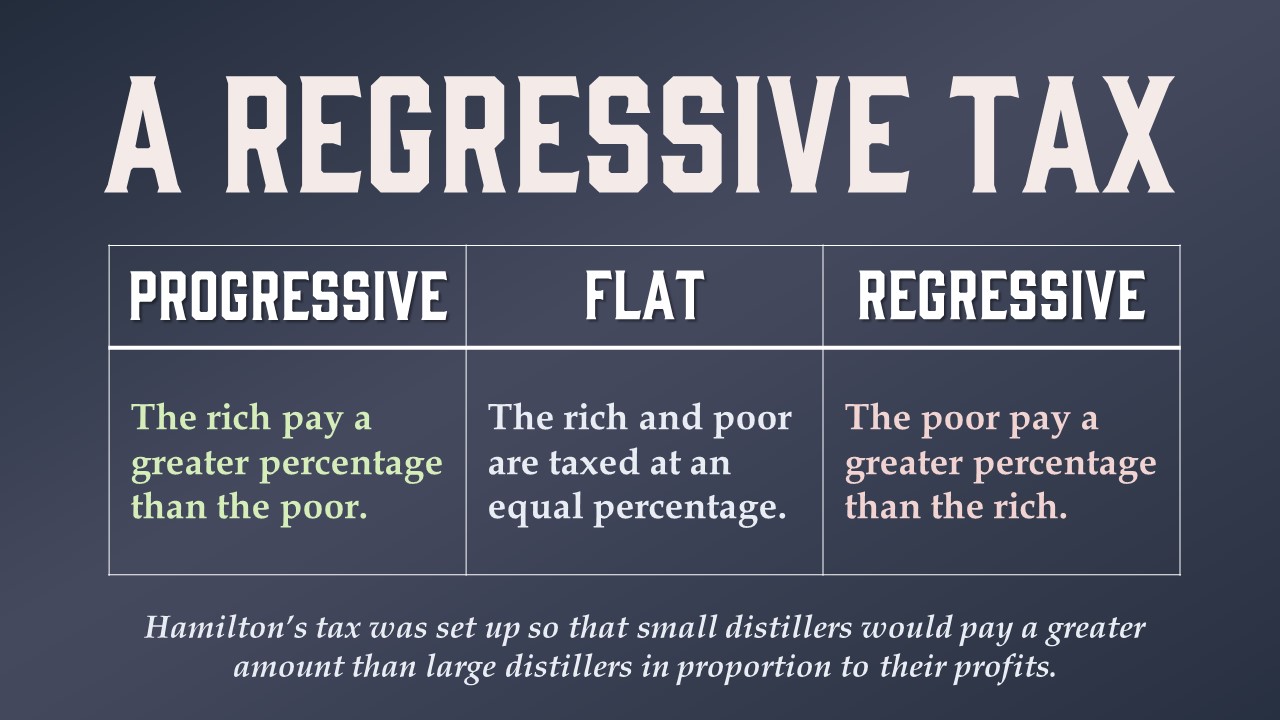
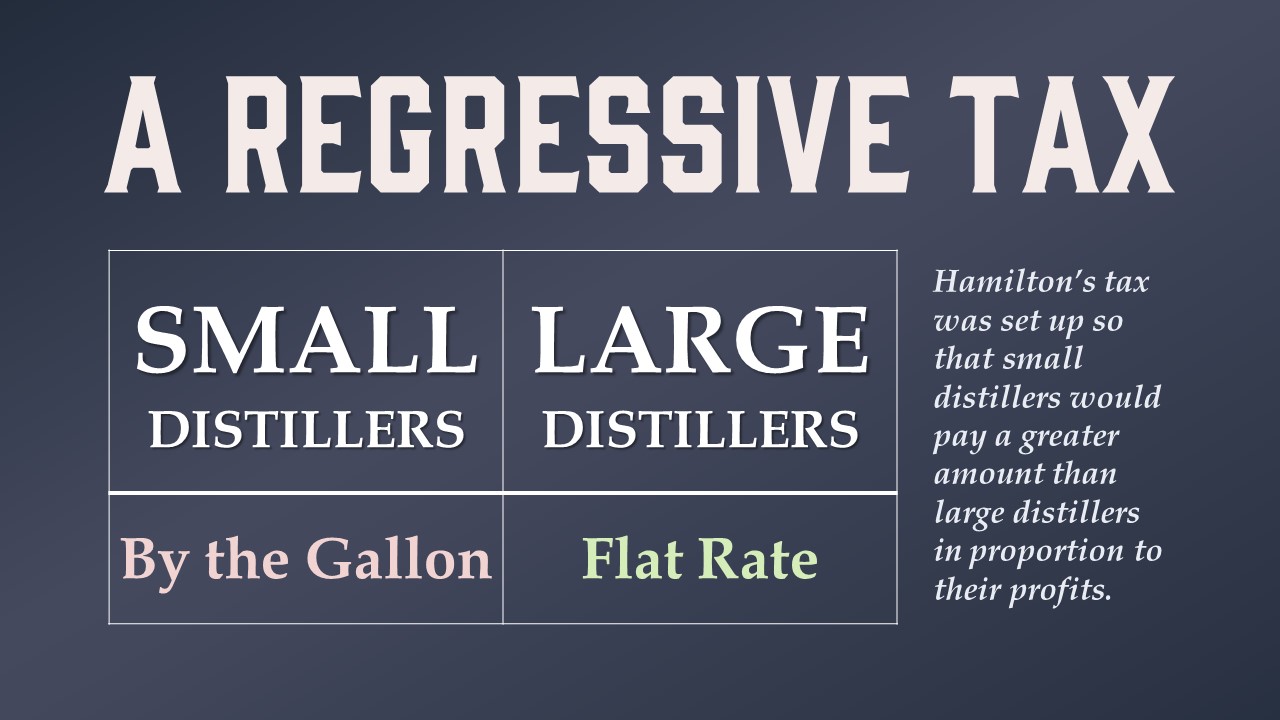
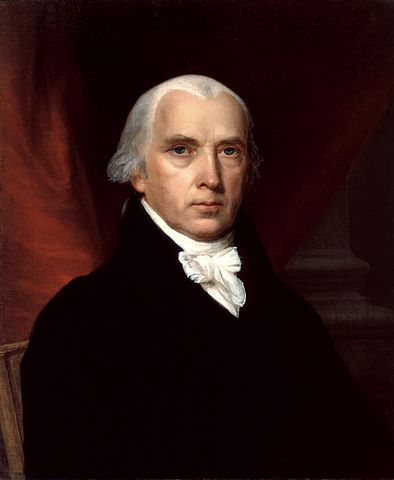
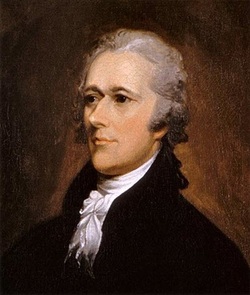

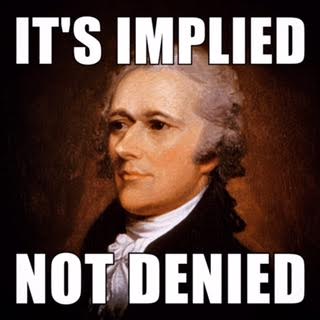


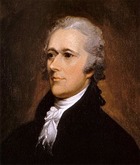
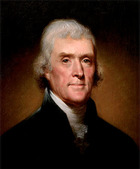


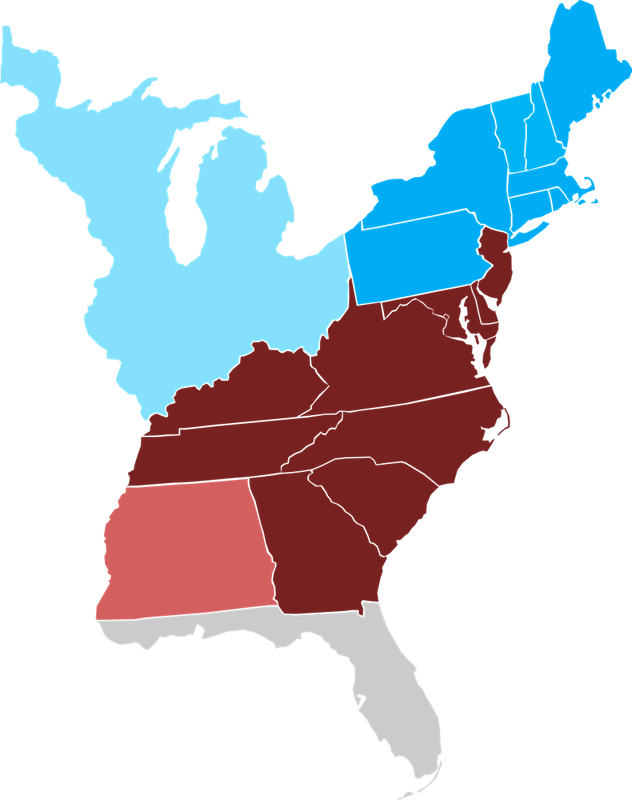

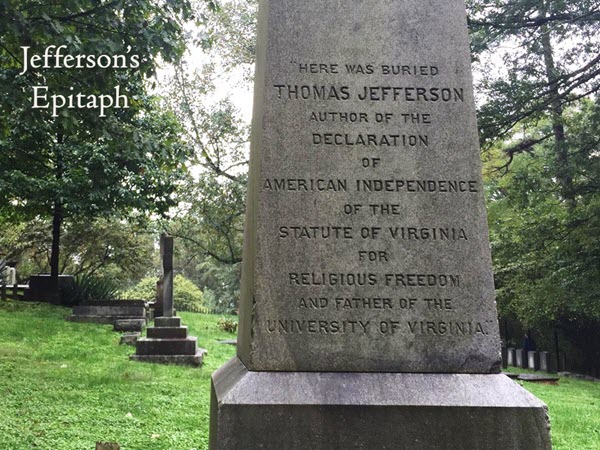
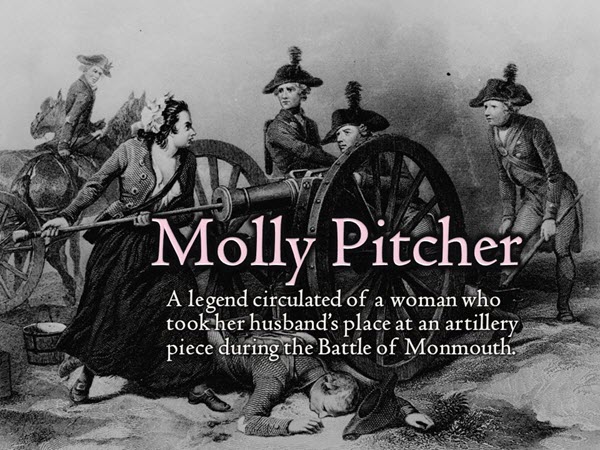

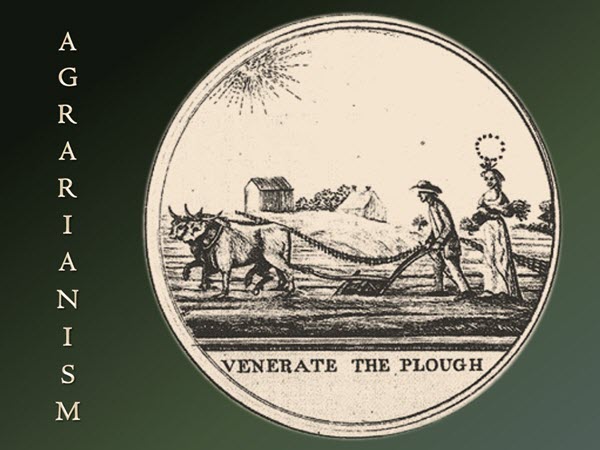

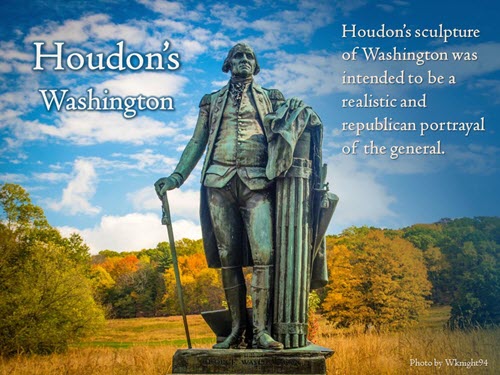
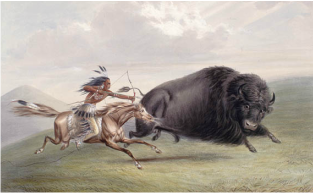


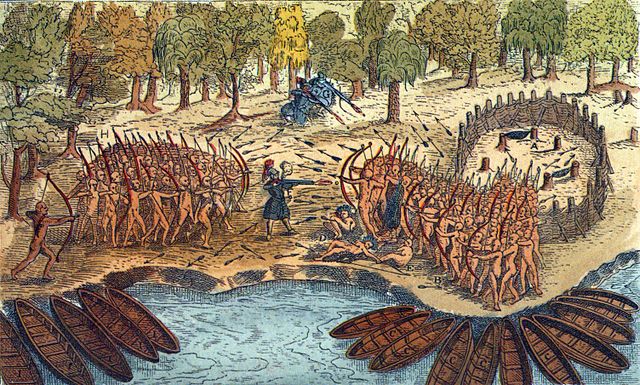

 RSS Feed
RSS Feed